Growing blueberries in a greenhouse during the summer requires careful management of temperature, humidity, and light to avoid the adverse effects of high temperatures and intense sunlight. Here are some key steps and considerations:
1. Temperature Management
● Cooling Measures: Summer greenhouse temperatures can get too high, so consider these cooling methods:
● Ventilation: Use vents, side windows, and roof windows to promote air circulation and reduce internal temperatures.
● Shade Nets: Install shade nets to reduce direct sunlight and lower internal temperatures. Shade nets typically have a shading rate of 50% to 70%.
● Misting Systems: Use misting or fogging systems to increase air humidity and help lower temperatures, but avoid excessive moisture to prevent diseases.
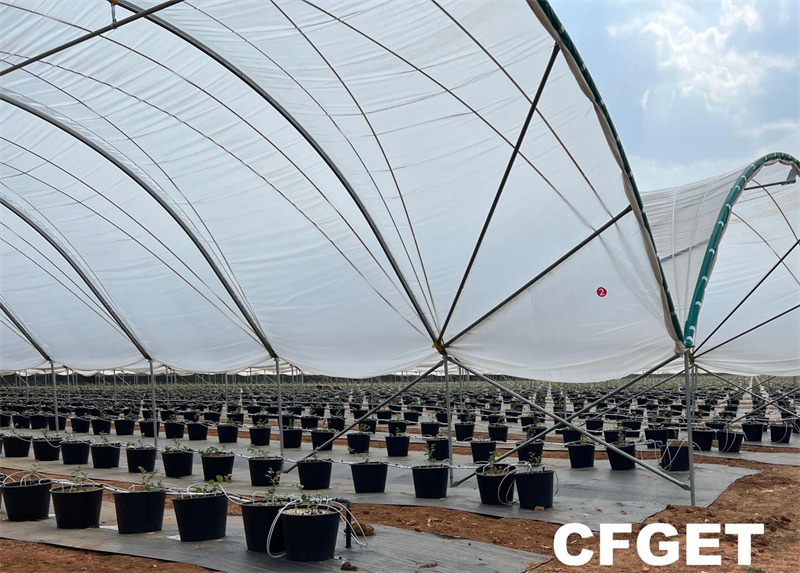
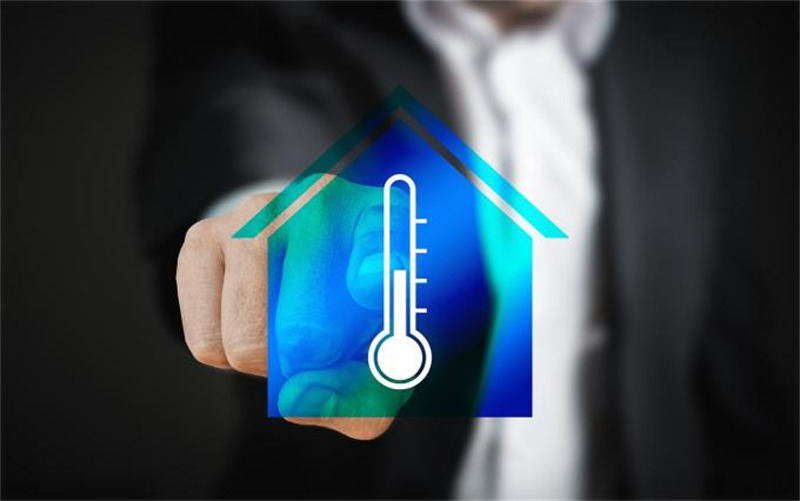
2. Humidity Control
● Optimal Humidity: Maintain air humidity between 50% and 70% in the summer. High humidity can lead to fungal diseases, while low humidity can cause rapid water loss in blueberry plants, affecting growth.
● Ensure Ventilation: While using misting systems, ensure good ventilation to avoid excessive humidity.
3. Light Management
● Control Light Intensity: Blueberries need ample light, but intense summer sunlight can scorch leaves and fruits. Use shade nets or white plastic films to reduce light intensity.
● Light Duration: Summer days are long, naturally meeting the light needs of blueberries, so additional lighting is generally unnecessary.
4. Water Management
● Proper Irrigation: High summer temperatures increase water evaporation, requiring more frequent watering. Use drip irrigation systems to ensure even water distribution and avoid waterlogging.
● Soil Moisture Monitoring: Regularly monitor soil moisture to keep it adequately moist but not waterlogged, preventing root rot.
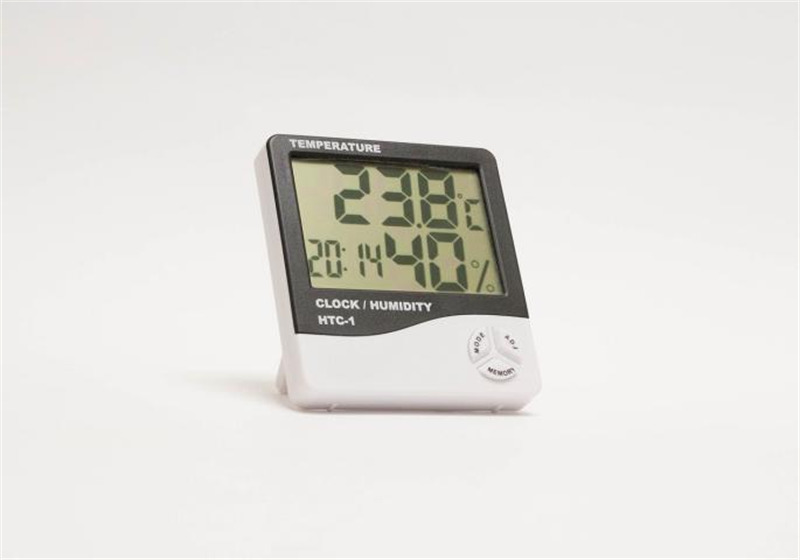
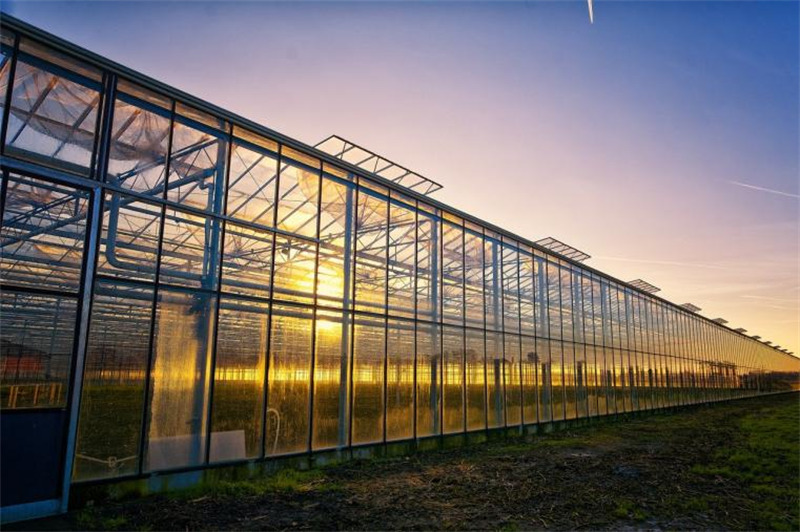
5. Fertilization Management
● Moderate Fertilization: Blueberries grow vigorously in summer, but avoid over-fertilization to prevent excessive vegetative growth. Focus on phosphorus and potassium fertilizers, with minimal nitrogen to promote fruit development.
● Foliar Fertilization: Use foliar fertilizers, especially when nutrient uptake is poor due to high temperatures, to supplement nutrition through leaf spraying.
6. Pest and Disease Control
● Prevention First: High temperatures and humidity in summer can trigger diseases like gray mold and powdery mildew. Regularly inspect plants and take preventive measures against pests and diseases.
● Biological Control: Use biological control methods, such as introducing natural predators or using biopesticides, to reduce chemical pesticide use and protect the environment and plant health.
7. Pruning Management
● Summer Pruning: Prune old and dense branches to improve air circulation and light penetration, reducing the incidence of pests and diseases.
● Fruit Management: Remove excess small fruits to concentrate nutrients and ensure fruit quality and size.
8. Harvesting and Storage
● Timely Harvesting: Harvest blueberries promptly when ripe to avoid over-ripening or spoilage in high temperatures.
● Cold Chain Transport: Quickly pre-cool harvested blueberries to maintain freshness and extend shelf life.
By effectively managing temperature, humidity, and light, along with proper water, fertilization, and pest control measures, growing blueberries in a summer greenhouse can maintain good yields and improve fruit quality and market competitiveness.
Email: info@cfgreenhouse.com
Phone: (0086) 13550100793
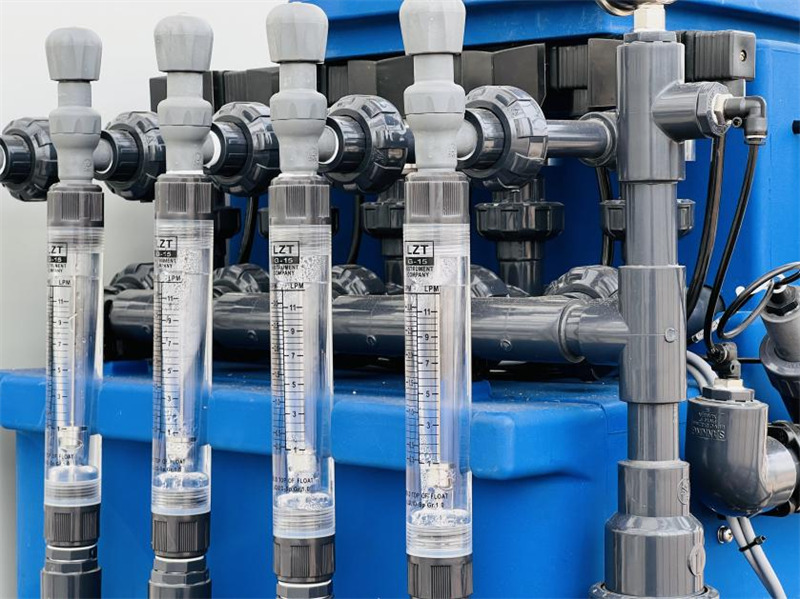
Post time: Aug-30-2024







 Click to Chat
Click to Chat